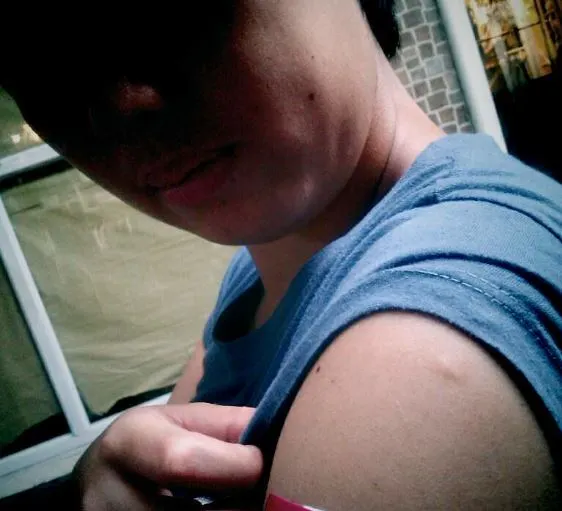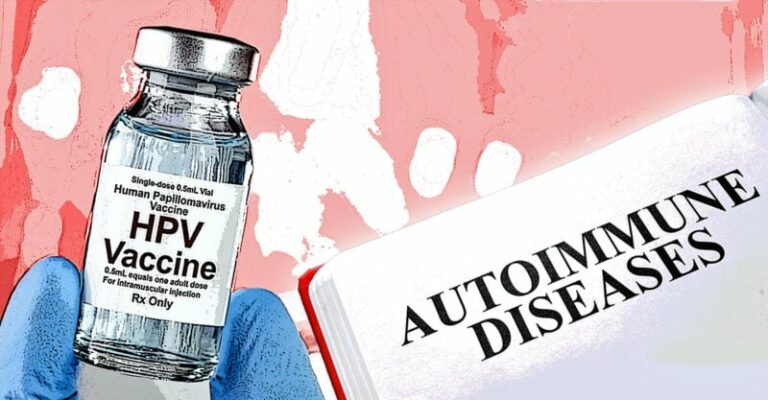Moderna Halts mRNA HIV Vaccine Trials After High Rate of Side Effects Reported
In a series of Phase 1 trials, 7-18% of participants who received the experimental mRNA shots experienced skin reactions, including hives, itchiness or hives caused by scratching. Skin reactions can be an “early warning radar for general immune response” issues.
Story at a glance:
- The most recent messenger RNA, or mRNA, failure was a Phase 1 trial of Moderna’s mRNA human immunodeficiency virus (HIV) injection.
- Larger trials were halted after a high rate of “puzzling skin side effects” occurred.
- In a series of Phase 1 trials, 7% to 18% of participants who received the experimental mRNA shots experienced skin reactions, including hives, itchiness or hives caused by scratching.
- Skin reactions can be an “early warning radar for general immune response” indicative of a greater problem.
- Although all HIV mRNA shots have failed to pass even the initial trials, we’re to believe COVID-19 mRNA shots passed safety and efficacy studies with flying colors and the technology is thereby “proven” safe and effective.
Messenger RNA vaccines are being described as a “new era in vaccinology.”
Research is underway to develop mRNA shots for not only coronaviruses but also C. diff, hepatitis C, influenza, malaria, norovirus, cancer and more — despite the fact that all mRNA shots are likely ineffective and/or dangerous.
The most recent mRNA failure was a Phase 1 trial of Moderna’s mRNA HIV injection. Larger trials were halted after a high rate of “puzzling skin side effects” occurred.
“We are taking this very seriously,” Carl Dieffenbach, head of the Division of AIDS at the National Institute of Allergy and Infectious Diseases (NIAID), told Science.
Although all HIV mRNA shots have failed to pass even the initial trials, researchers plan to repeat the Phase 1 trial using a lower dose.
High rates of skin reactions halt HIV mRNA shot trials
Trials of mRNA-based HIV immunogens are being conducted in partnership with the International AIDS Vaccine Initiative (IAVI), Moderna, the HIV Vaccine Trials Network (HVTN), the National Institutes of Health and the Bill & Melinda Gates Foundation.
In a series of Phase 1 trials, 7% to 18% of participants who received the experimental shots experienced skin reactions, including hives, itchiness or hives caused by scratching.
In a news release, IAVI largely downplayed the concerning outcome, stating:
“Most of these events were mild or moderate and managed with simple allergy medications. There were no serious adverse events reported. Participants who experienced skin events were provided all medical care necessary and were monitored closely.
“IAVI and partners are actively working to investigate the potential causes of these skin events. We have brought in an interdisciplinary team of external experts, including allergists and immunologists, to further assess the skin events.
“In the interest of transparency and clarity, IAVI and partners have presented preliminary data on immune responses and safety at scientific conferences and look forward to continuing our discussion of these results.”
However, the setback highlights the continued failures in the race to create an mRNA HIV shot. “We would be moving more quickly if this finding had not been observed,” IAVI head Mark Feinberg told Science.
Problems plague mRNA HIV shots
To create the shot, researchers have been injecting “different mRNAs, encoding various pieces of HIV’s surface protein or the entire molecule, over the course of several months.”
The idea is to trigger the creation of broadly neutralizing antibodies, or bNAbs.
BNAbs are immune system proteins that have the unique ability to fight a wide range of strains of a virus.
In terms of HIV, bNAbs are of particular interest because HIV is highly variable, with numerous strains circulating globally.
Derek Lowe, a medicinal chemist, wrote:
“Moderna has been working for some years now on a possible HIV vaccine using their mRNA technology, which is an ambitious goal.
“There have been numerous attempts at this over the decades, and needless to say none of them have worked out yet. There is almost certainly not going to be a single-shot vaccine targeting a single antigen — the situation is too complex for that.
“Since the virus comes in many different strains, the hope has been that some sort of more comprehensive vaccine protocol might be able to induce broadly neutralizing antibodies that could take on all comers.”
Most antibodies target specific virus strains, but bNAbs can neutralize many strains of HIV, making them a powerful tool in the fight against this virus. While people with HIV sometimes develop their own bNAbs, no vaccine has done so.
The idea in creating bNAbs through mRNA technology for HIV is to deliver instructions for creating proteins that resemble parts of the HIV envelope.
This would, in theory, stimulate the immune system to produce bNAbs that can neutralize a wide range of HIV strains, offering broad protection against the virus.
As reported by Bloomberg:
“Creating an mRNA vaccine for HIV is trickier than making the kind of SARS-CoV-2 shots we’ve become familiar with. The mRNA COVID vaccines deliver the recipe for the spike protein. …
“This causes immune cells to produce neutralizing antibodies against COVID, much as they would do if they had experienced a COVID infection.
“With HIV, there’s no such simple recipe. HIV’s equivalent to the spike protein — its envelope glycoprotein — is wilier. It hides its vulnerable aspects, making it difficult for immune cells to generate antibodies against it. An even bigger problem is that HIV starts to mutate within hours of infecting someone. …
“HIV behaves like ‘a swarm of slightly different viruses’ … People with HIV rarely develop neutralizing antibodies, and in the very few who do, the antibodies take years to evolve — far too long for them to effectively fight the virus. The immune system can’t keep up.
“But what if the immune system could be given a head start? That’s the idea behind the Moderna/IAVI vaccine … The researchers will administer a series of shots to try to coax the immune system along that years-long process ahead of time so that when it is exposed to HIV, it can spring into action.”
Skin problems may be early warning for an immune response
While the Moderna HIV shot reportedly generated “impressive antibodies that were moving toward bNAbs,” the high rate of skin problems it triggered is suggestive of a greater problem.
Lowe went so far as to describe them as an “early warning radar for general immune response”:
“A significant number of vaccine recipients (ten to fifteen percent in some cases) have shown various sorts of skin reactions (hives, etc.) These almost always resolve, but it is a warning.
“Skin reactions are sort of an early warning radar for general immune response (thus the skin tests for various allergens), and the worry is that these might well become worse on further dosing (or be harbingers of other immune problems in different organ systems). It’s definitely worth a closer look.
“I have to point out that this side effect rate is much higher than has been seen with the coronavirus mRNA vaccines (thus the alarm bells), but skin reactions are not unknown there, either. … No one is quite sure if it’s the mRNA species themselves that set off the response here, or if it’s something about the formulation (the lipid nanoparticles).”
“Potentially more worrisome, however, would be if the problem is tied to a cumulative effect from multiple mRNA shots,” Science reported.
It’s important to point out that while all HIV mRNA shots have failed, we’re to believe COVID-19mRNA shots passed safety and efficacy studies with flying colors and the technology is thereby “proven” safe and effective.
However as noted by Canadian oncologist and cancer researcher Dr. William Makis, “The more mRNA shots you take, the greater the immune system damage, the greater your risk of impaired cancer surveillance and hence, the greater your risk of turbo cancer.”
Turbo cancers is a term used to describe the emergence of rapid-growing cancers in people, many under age 30, who have received one or more COVID-19 jabs — another warning that mRNA shots aren’t as safe as we’ve been led to believe.
“Unfortunately, the entire LNP/mRNA Vaccine field is a fraud. It’s a failed technology with an unacceptably terrible side effect profile. The entire field now depends on the suppression of COVID-19 mRNA Vaccine injuries & deaths, which are now in the millions (5.3 million in WHO VigiAccess alone), so we are no longer dealing with scientists but con artists. …
“They are trying to find “novel” ways to market a failed technology platform and sneak failed vaccine products onto the market. The Moderna HIV mRNA Vaccine is such a product. …
“And yes, they are moving forward, despite 20% of HIV mRNA Vaccine Victims developing skin rashes in Phase I trials. Moderna will repeat the Phase I trials with a slightly lower dose. The poisonings will continue until vaccine injuries improve.”
All mRNA shots likely ineffective, dangerous
While the latest HIV mRNA shot trial showed a risk of side effects, others have shown the shots don’t work. One clinical trial conducted by the NIAID-funded HVTN began in 2019 and involved 3,900 participants.
The experimental HIV vaccine regimen used in the study was developed by Janssen, the vaccine division of Johnson & Johnson (J&J), and did not provide protection against HIV, leading the study to be discontinued.
“The vaccine used the same antigen delivery system employed by J&J’s COVID-19 vaccine, a common cold virus known as adenovirus 26,” Stat News reported, and at least five others have also failed.
While the Janssen HIV shot was not mRNA, the HVTN continued to point to mRNA technology as a potential solution. However, mRNA shots are inherently problematic.
For instance, Pfizer’s mRNA COVID-19 shots also instruct cells to produce additional “off-target” proteins that could pose significant health risks.
Ribosomes decode mRNA in cells, but about 8% of the time those in COVID-19 shots may misread the coded instructions, Maryanne Demasi, Ph.D., a former medical scientist with the University of Adelaide and former reporter for ABC News in Australia, explains:
“The researchers say that ribosomes, which are responsible for decoding the mRNA in cells, can slip and misread the coded instructions about 8% of the time – known as ‘ribosomal frameshifting.’ They say the ‘glitch’ has to do with how the mRNA in the vaccine has been genetically modified.
“Unlike naturally-occurring mRNA, the mRNA that exists in the vaccines has had a ‘uridine’ base replaced with a ‘N1-methyl pseudouridine’ (to stabilise it) and unfortunately, has made it prone to reading errors.”
In May 2021, I interviewed Stephanie Seneff, Ph.D., a senior research scientist at Massachusetts Institute of Technology (MIT) for over five decades, about the likely hazards of replacing the uracil in the RNA used in the COVID-19 shots with synthetic methylpseudouridine.
This process of substituting letters in the genetic code is known as codon optimization, which is known to be problematic.
At the time, Seneff predicted the shots would cause a rise in prion diseases, autoimmune diseases, neurodegenerative diseases at younger ages, blood disorders and heart failure, and one of the primary reasons for this is because they genetically manipulated the RNA in the shots with synthetic methyl pseudouridine, which enhances RNA stability by inhibiting its breakdown.
Researchers at Cambridge University and the Universities of Kent, Oxford and Liverpool, then discovered that the use of methylpseudouridine results in a high rate of ribosomal “frameshifting,” which causes your cells to produce off-target proteins with unknown effects.
Further, in a 2023 preprint study, microbiologist Kevin McKernan — a former researcher and team leader for the MIT Human Genome project — and colleagues assessed the nucleic acid composition of four expired vials of the Moderna and Pfizer mRNA shots.
“DNA contamination that exceeds the European Medicines Agency (EMA) 330ng/mg [nanograms per milligram] requirement and the FDAs [U.S. Food and Drug Administration’s] 10ng/dose requirements” was found.
So, in addition to the spike protein and mRNA in COVID-19 shots, McKernan’s team discovered SV40 promoters that, for decades, have been suspected of causing cancer in humans.
Injured by an mRNA COVID jab? Here’s help
It’s important to be wary of any new mRNA shots that come on the market and carefully weigh if the risks outweigh the reported benefits before getting on.
However, if you’ve already had one or more COVID-19 shots, there are steps you can take to repair the assault on your system.
Remember, the more mRNA shots you take, the greater the immune system damage. So, the first step is to avoid getting any more mRNA jabs. Next, if you’ve developed any unusual symptoms, seek out help from an expert.
The Front Line COVID-19 Critical Care Alliance (FLCCC) also has a treatment protocol for post-jab injuries.
It’s called I-RECOVER and can be downloaded from covid19criticalcare.com.
Dr. Pierre Kory, who cofounded the FLCCC, has transitioned to treating the vaccine injured more or less exclusively. For more information, visit DrPierreKory.com.
A board-certified internist and cardiologist Dr. Peter McCullough is also investigating post-jab treatments, which you can find on PeterMcCulloughMD.com.
Originally published by Mercola.
Suggest a correction






